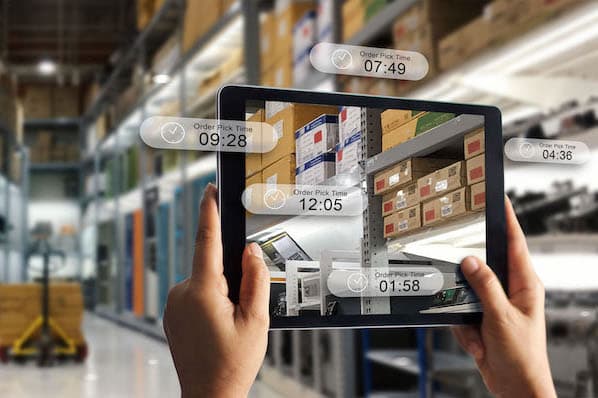Covid-19 echoed what B2B buyers have been looking for all along. High-value and transparent services. How does your team measure up? Read on for more details.
With the pandemic setting in and causing all manner of disruptions, interactions in the B2B space quickly moved online. B2B sellers employed all kinds of digital marketing tactics to retain and win more clients.
Some things became clear – speed, transparency, and expertise are key aspects buyers look for when choosing one seller over the other. They are looking for seamless operations and expect the same (if not better) expertise they received from face-to-face interactions.
Taking advantage of this knowledge and putting it into practice will help businesses to remain standing long after we get this pandemic under control. Here are five tactics to help improve efficiency, generate more leads, and grow your revenue.
Review Your Operations
Most companies understood that to remain competitive they needed to undergo digital transformation. What many didn’t consider was that the digital marketing space has its own set of rules and strategies for success.
Alongside the move to digitize your offerings, must come a change in business and employee mindsets. Here are some suggestions on reviewing company operations for increased sales
- Invest in integrated sales and marketing automation systems that automate your sales processes from order placement to processing and delivery. Besides streamlining processes, these systems also support lead generation activities and free your teams to connect with existing or new customers.
- Identify the tech tools your business needs to operate more effectively and train your employees to use them.
- Ensure your website (along with your mobile app) is user-friendly. Have a clear message and make it easy for visitors to find your products, prices, and contact information.
- Rediscover your customer’s new decision-making journey. Pay attention to the ‘new’ pain points and structure solutions to handle them.
- Enrich your audience’s experience by personalizing content and communication across all your channels.
- Call, text, email, or video call your customers from time to time to check upon them.
- Use data to monitor campaigns, business strategies, buyer behaviour, and industry trends.
Augmented Reality

Augmented reality has many things going for it. Along with the “cool factor” that attracts millennial decision-makers, it’s an innovative way to showcase your brand/solutions to prospective buyers.
This effective lead generating and income providing strategy can be used by businesses of all sizes and in every field. Benefits of augmented reality for B2B sales include:
- Increases your credibility and buyer confidence. With AR, customers have a realistic picture of what they are buying and assurance that what you say is what you provide. This increases their confidence and willingness to buy.
- Adds oomph to sales presentations and product demos. AR can help shake up boring presentations and brochures by creating a more interactive experience that shows your products rather than just talk about them.
- Enhances the virtual shopping experience for buyers who prefer doing business online. They get a 3D lifelike experience that allows them to interact with the products.
- AR eliminates the need for prospects to comb through product brochures and pages by providing the technical info, features, and benefits on one screen. This may help speed up the purchase process.
Brands that face stiff competition can set themselves apart by leveraging the effectiveness of AR to lock in business.
Chatbot Marketing

If chatbot marketing feels like something pulled out of a sci-fi movie, it probably was. And now it’s working in the real world. Up to 55 per cent of internet users stated that they enjoy the quick responses they receive from chatbots. A further 64 per cent of users appreciate the round-the-clock service they get from chatbots.
Chatbots shouldn’t be confused with live chat even though they serve similar functions to improve customer experience. Live chat depends on live members of staff to tackle queries and field questions. Chatbots are pre-programmed with a set of questions to motivate user interactions. You can customize their personality and tone to better assist your customers.
For your business, a chatbot can be instrumental in providing useful information to customers and prospects. This increases the level of engagement and helps nurture leads to convert. Chatbots also offer insights into operational activities such as contact qualification, site navigation enhancement, and conversion opportunities.
How do you get into chatbot marketing?
There are several chatbot builders that can help you leverage chatbot marketing. The best chatbot builders provide pre-built templates to facilitate easy deployment, integrate with the systems you use, and work with multiple channels.
These include ManyChat, Chatfuel, WotNot, MobileMonkey, Tidio, SnatchBot, SendPulse, and Pandorabots.
Cold Calling

Cold calling remains a key strategy for reaching and understanding your market as we emerge from the pandemic. The main reason being that feedback is instantaneous.
Done right, the call can reveal new challenges your prospective customers are facing, allowing you to go back to the table and tweak your offerings. Here are some practices you can employ for better success:
- Have the right information about your prospect before making calls. Research your prospect’s industry, challenges, competitors, and what differentiates your offering.
- Avoid sounding like a telemarketer. That already has a bad reputation for shoving products/services down people’s throats. Have real conversations with your listeners and aim to offer value rather than push them to buy what you’re selling.
- Work on your confidence to avoid sounding timid or vague. The listener may take advantage of that to harass, bully you, or hang up the phone.
- Salespeople like to talk, but if you want to engage your prospect and understand their needs, you’ll need to learn to listen more. Effective cold calling starts with your ability to have a dialogue and not a monologue.
- Avoid turning objections to a “me vs you” match. Listen, understand, and clarify what the prospect is saying so you can put forth an alternative approach.
Run Promotions

B2B promotions have a wide range of objectives that may include product launches, sales increases, competitive retaliations, and creating brand equity. But the primary reasons for running promotions are:
- To increase demand for your products/services
- To showcase differentiators
- To provide information to prospective clients
How do you run effective B2B promotions?
- Define your unique differentiator. What do you want to promote? How is your offering different? Why should the market care? Defining your superiority sets you apart from the competition.
- Know your target market. The more you know your target audience, the better you’ll tailor messages and promotions that answer their problems.
- Avoid running too many promotions. If customers know that you’re always holding sales, they may choose to wait till the next sale, meaning you’ll miss out on full-price sales.
- Gate certain promotions to a select group of buyers to make them feel privileged. For other buyers, it will create a fear of missing out, which may boost sales
- Offer freebies like free samples, free consultation, free trials, free shipping/return to encourage buy-in.
- Promote your promotions where your target audience can see them. By knowing your target audience and where they hang out on social, you can spread the word there.

